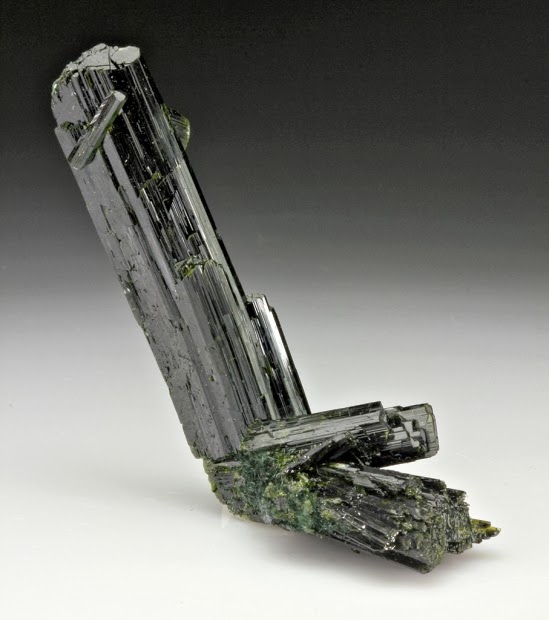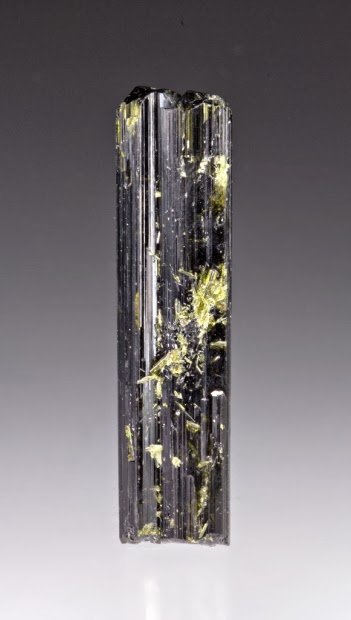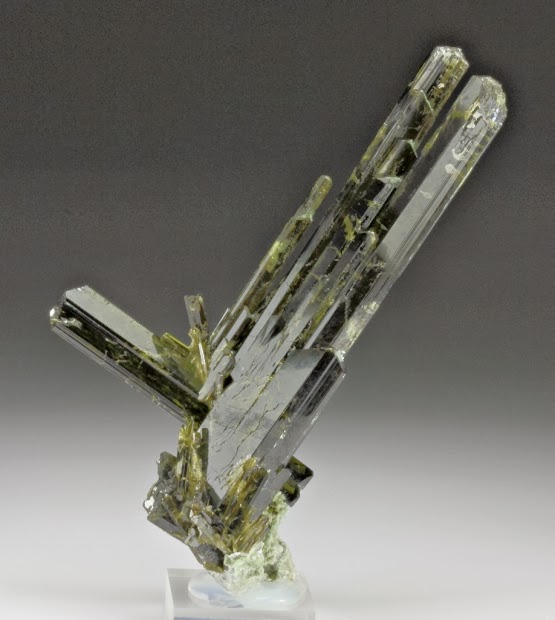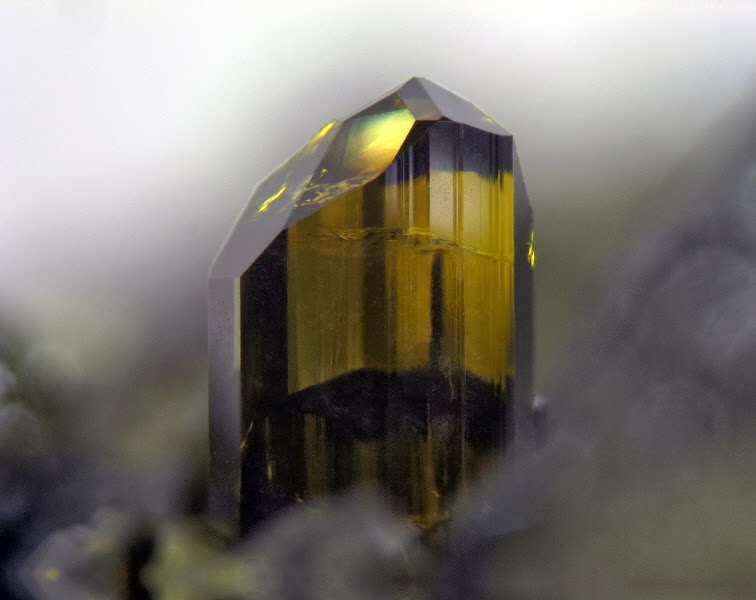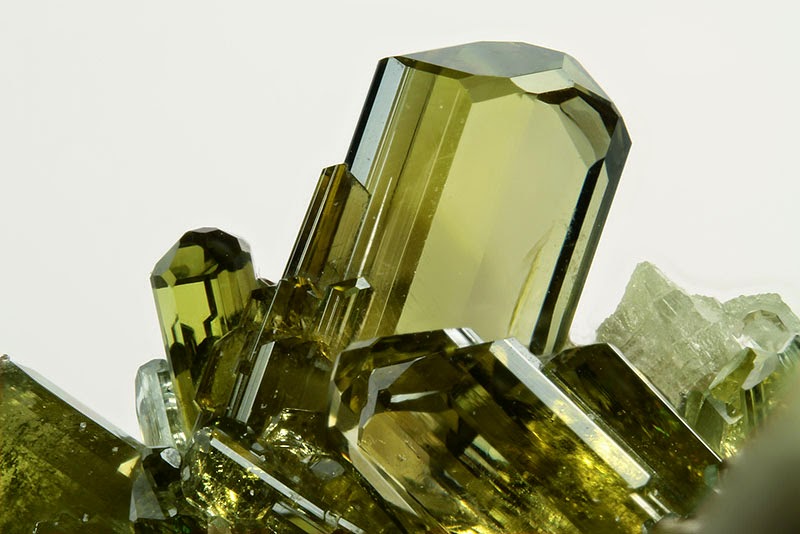
Chemical Formula: {Ca2}{Al2Fe3+}(Si2O7)(SiO4)O(OH)
Locality: Common world wide.
Name Origin: From the Greek epidosis – “addition.”
Description
Well-developed crystals of epidote, {Ca2}{Al2Fe3+}(Si2O7)(SiO4)O(OH), crystallizing in the monoclinic system, are of frequent occurrence: they are commonly prismatic in habit, the direction of elongation being perpendicular to the single plane of symmetry. The faces are often deeply striated and crystals are often twinned. Many of the characters of the mineral vary with the amount of iron present for instance, the color, the optical constants, and the specific gravity. The color is green, grey, brown or nearly black, but usually a characteristic shade of yellowish-green or pistachio-green. It displays strong pleochroism, the pleochroic colors being usually green, yellow and brown. Clinozoisite is green, white or pale rose-red group species containing very little iron, thus having the same chemical composition as the orthorhombic mineral zoisite. The name is derived from the Greek word “epidosis” (επίδοσις) which means “addition” in allusion to one side of the ideal prism being longer than the other.
Epidote is an abundant rock-forming mineral, but one of secondary origin. It occurs in marble and schistose rocks of metamorphic origin. It is also a product of hydrothermal alteration of various minerals (feldspars, micas, pyroxenes, amphiboles, garnets, and others) composing igneous rocks. A rock composed of quartz and epidote is known as epidosite. Well-developed crystals are found at many localities: Knappenwand, near the Großvenediger in the Untersulzbachthal in Salzburg, as magnificent, dark green crystals of long prismatic habit in cavities in epidote schist, with asbestos, adularia, calcite, and apatite; the Ala valley and Traversella in Piedmont; Arendal in Norway; Le Bourg-d’Oisans in Dauphiné; Haddam in Connecticut; Prince of Wales Island in Alaska, here as large, dark green, tabular crystals with copper ores in metamorphosed limestone.
The perfectly transparent, dark green crystals from the Knappenwand and from Brazil have occasionally been cut as gemstones.
Physical Properties
Cleavage: {001} Perfect
Color: Yellowish green, Brownish green, Black, Yellow, Gray.
Density: 3.3 – 3.6, Average = 3.45
Diaphaneity: Transparent to translucent to opaque
Fracture: Regular – Flat surfaces (not cleavage) fractured in a regular pattern.
Hardness: 7 – Quartz
Luminescence: Non-fluorescent.
Luster: Vitreous (Glassy)
Streak: grayish white
Photos :
